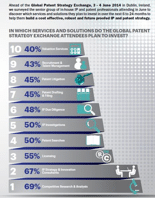The USPTO began accepting applications for the Glossary Pilot on Monday, June 2 as part of ongoing efforts to improve the U.S. patent system. The Office initiated the pilot program to study the impact of glossary on claim clarity in the specification of software-related patent applications by encouraging the use of glossaries by patent applicants and will run for 6 months.
Participation in the Glossary Pilot requires an applicant to include a glossary section in the patent application specification to define terms used in the patent application. Applications accepted into this pilot will receive expedited processing and be placed on an examiner’s special docket prior to the first Office action, and will have special status up to issuance of a first Office action.
To qualify for the Glossary Pilot Program, all of the conditions and requirements set forth in the Federal Register Notice dated March 27, 2014 must be satisfied. In particular, applicants are reminded that:
1. The application must be an original, non-reissue, non-provisional utility application that does not claim benefit of a prior filed non-provisional U.S. application, unless the application is a continuation-in-part application filed for the purposes of providing a glossary.
2. The application and the petition to make special using Form PTO/SB/436 must be filed on or after June 2, 2014 and before either 200 petitions are granted and/or six months after the June 2, 2014 start date, whichever occurs first.
3. The claimed invention must be classified in one of the following Art Areas (see USPC class [PDF] ) information to determine if the utility application would be subject to examination by one of the technology areas listed).
4. The application must include a glossary that is placed at the beginning of the detailed description portion of the original specification of the application, identified with a heading, and presented on filing of the application. The glossary should include definitions that will assist in clarifying the claimed invention, creating a clear application file wrapper history, and must comply with all of the requirements set forth in Section III.B of the notice. [PDF]
5. The applicant must file the application, the petition to make special, and all follow-on papers using EFS-Web.
6. The application must contain at least one claim, but no more than four independent claims, and no more than 30 claims total.
For more information about the Glossary Pilot, contact Seema Rao 571-272-0800 or visit the initiative here.



